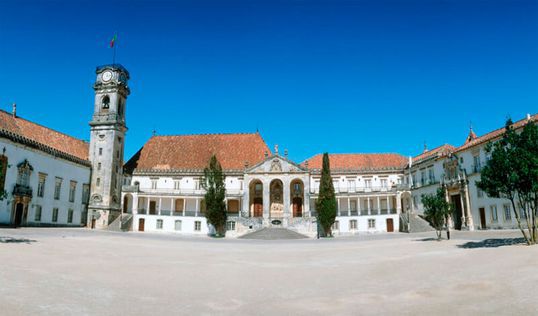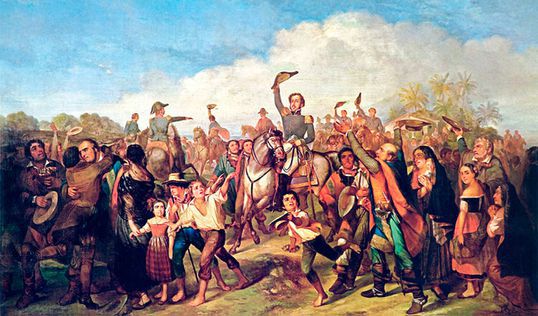Brazil is the largest country in Latin America and the most powerful in economic, military, and political terms.
Brazil represents almost exactly 50% of the entire population of South America. By sheer size, no other country in the region could compete in absolute terms.
It accounts for more than 50% of South America’s GDP, has by far the largest and most powerful army, is the largest market, is home to the largest and most cosmopolitan city in the southern hemisphere, has the most important industrial pole, is home to the dominant start-up industry, the largest financial industry, and has the most top universities, to name just a few highlights.
This reverses the traditional power relations between these two Iberian cultures, although some other countries in the region have better per capita GDP, productivity, and overall human development.
While Spain was traditionally the leading Iberian culture and Portugal for centuries the “junior partner”, sometimes invaded when the former felt like it, the situation in the New World looks quite different.

Portuguese is the language of the South American superpower, not Spanish.
HOW COULD THIS HAPPEN
Although most other Latin American countries were once colonies of Spain, they could not become independent as a large united nation, unlike the South American giant, which Portugal controlled.
Why?
Brazil remained united despite its different regions because of geographical, political, and social reasons.
ADMINISTRATION OF THE TERRITORIES
Due to geographical limitations, Spain and Portugal had different ways of administering their territories in the Americas.
Initially, the Portuguese colony was divided into two parts: the state of Brazil in the south and the states of Maranhão and Gran-Pará in the north, the latter benefiting from the currents of the Atlantic Ocean to reach Portugal more quickly.
They were all unified in 1808.
On the other hand, Brazil was divided into Captaincies General, whose capitals were mainly located in coastal cities, usually close to each other.
This allowed a close relationship between their elites.
In contrast, the Spanish Empire had more extensive dominions in the Americas, divided into viceroyalties and captaincies.
In the second half of the 18th century, these were the viceroyalties of New Spain (present-day Mexico), New Granada (present-day Colombia), Peru, and Río de la Plata, as well as the captaincies of Guatemala, Cuba, Venezuela, and Chile.
Their capitals were geographically distant, making them even more independent of each other, especially considering that Spain did not allow them to have trade relations.
THE INFLUENCE OF THE CATHOLIC CHURCH
The way the Catholic Church managed the large community of believers in the colonies of Spain and Portugal was another crucial factor.
This religious institution exerted a tremendous and significant influence on daily and political life.

There were five archbishoprics in the Spanish colonies (Mexico, Santo Domingo, Santa Fe, Lima, and La Plata), while in Brazil, there was only the archbishopric of Bahia.
IDEOLOGICAL HOMOGENEITY
It is also worth looking at the education that was available to the elite in the Americas.
Brazil had no university, so its citizens had to travel to Portugal to study at the University of Coimbra, among other institutions for higher education.
This gave them great confidence in the Portuguese system of government.
“Faced with the request to create a medical school in Minas Gerais in the 18th century, the Court’s response was: ‘Now they are asking for a medical school, in a short time they will ask for a law school, and then they will want independence,'” noted Brazilian historian José Murilo de Carvalho.
In contrast, Spanish America had 23 universities in its various territories.
Because they did not have to travel to Spain to complete their studies, ideas of independence could take hold in these territories, the historian said.
THE ELITES OF BRAZIL AND LATIN AMERICA
Initially, the Portuguese held the highest administrative positions, but in the 18th century, the crown issued decrees to increase Brazilians’ participation in political power in their territory.
In this way, the differences between the two were blurred.
In contrast, political power in Spanish America was constantly exercised by Spanish-born Spaniards (peninsular).
At the same time, American-born Spaniards (criollos) were relegated to the lowest positions in the administration, even though they had already been elected in the 18th century.
The Bourbon reforms, which included tax increases, only deepened the differences.
As a result, with the peninsular taking over their posts in the administration, the crown began to be perceived as a burden.
DIFFERENCES BETWEEN THE INDEPENDENCE MOVEMENTS
In 1808, Napoleon Bonaparte invaded Portugal, and the royal family fled to the American territories.
Joao VI abolished the Portuguese trade monopoly, opened Brazilian ports, and allowed the country to establish its manufacturing plants and universities.
With the creation of the United Kingdom of Portugal, Brazil, and the Algarve, Rio de Janeiro became the center of the empire.

After Napoleon’s departure, revolts broke out demanding João VI’s return to Portugal and the establishment of a constitutional monarchy.
In 1821, he left his son Pedro I in charge.
Under pressure from the courts to make Brazil a colony again and to persuade the Prince Regent to return to the mother country, a series of struggles ensued that ended in 1822 with the proclamation of independence by Dom Pedro himself.
It was also a struggle to maintain territorial integrity, as there were plans to divide the country into captaincies.
Spain was also invaded by Napoleon Bonaparte, who, after the abdication of Charles IV and his son Ferdinand VII, placed his brother Joseph on the throne.
Not recognizing the new monarch, the major cities of Spanish America formed their own Juntas de Gobierno, and emancipation movements emerged.
Unlike Brazil, where the conflict lasted only two years, the war in Spanish America dragged on for more than two decades and left heavy casualties in its wake.
The independence movements took place separately.
WHY DID BRAZIL REMAIN A SINGLE COUNTRY AFTER INDEPENDENCE?
Some separatist movements in Brazil, for example, in Pará, Maranhão, Bahia, and Rio Grande do Sul, but lacked popular support and were quickly crushed by the prominent Brazilian army.
On the other hand, separatist movements in the rest of Latin America had significant popular support, which facilitated the independence of Central American countries or the breakaway of Venezuela and Ecuador from Gran Colombia.
However, there were integration movements at one point.

